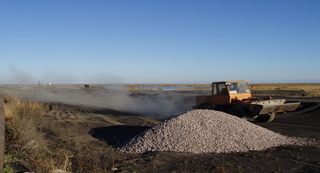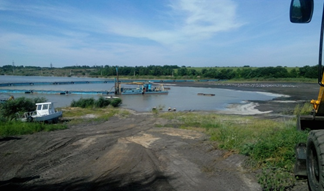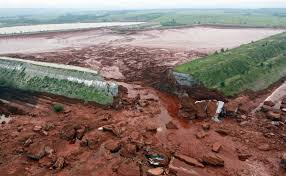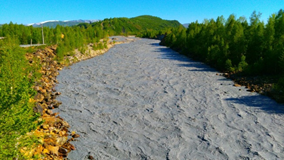|
|
Raising Knowledge among Students and Teachers on Tailings Safety
� TMF PROBLEM SIGNIFICANCE The last two decades demonstrated a growing concern on environmental degradation caused by large-scale movement of hazardous materials as a result of failures of tailings management facilities (TMFs) where large amounts of mining wastes are stored. These wastes pose serious threats to humans and the environment, especially if tailings facilities are improperly designed, constructed, operated or managed.
�Large amounts�of these storages located in Donetsk and Lviv-Volynskyi coal basins, Kryvyi Rig iron ore basins and other regions cover the area of over 160 thousand hectares (National report �On Technogenic and Natural Security in Ukraine�).
In 2008 due to a dam failure waste products were again dumped from potash fertilizers tailings at the�Kalush chemical plant into Dniester, which caused the concern of Government of the Republic of Moldova. In January 2011, the tails had dried up at the alumina refinery plant near the city of Mykolaiiv (Southern Ukraine) and stored wastes were dispersing as dry red dust. The topsoil, atmosphere, ground and surface water, settlements were affected over the area of tens of square kilometres. Many efforts have been undertaken by the international expert community to improve TMF safety. Nevertheless, tailings in many countries still urgently need taking safety measures with special attention to the increase knowledge in this area of responsible persons. Addressing this problem, within the framework of the project of German Environment Agency (UBA) �Improving the safety of industrial tailings management facilities based on the example of Ukrainian facilities� (2013-2015) the Ukrainian team technically and scientifically managed by German Environment Agency and leading international experts has developed the Methodology for improving TMF safety based on the checklist approach. The developed TMF Methodology can be used as the practical tool to implement UNECE TMF Safety Guidelines and contribute to improving the safety of hazardous industrial sites subject to Directives 2006/21/EC and 2012/18/EC. |






